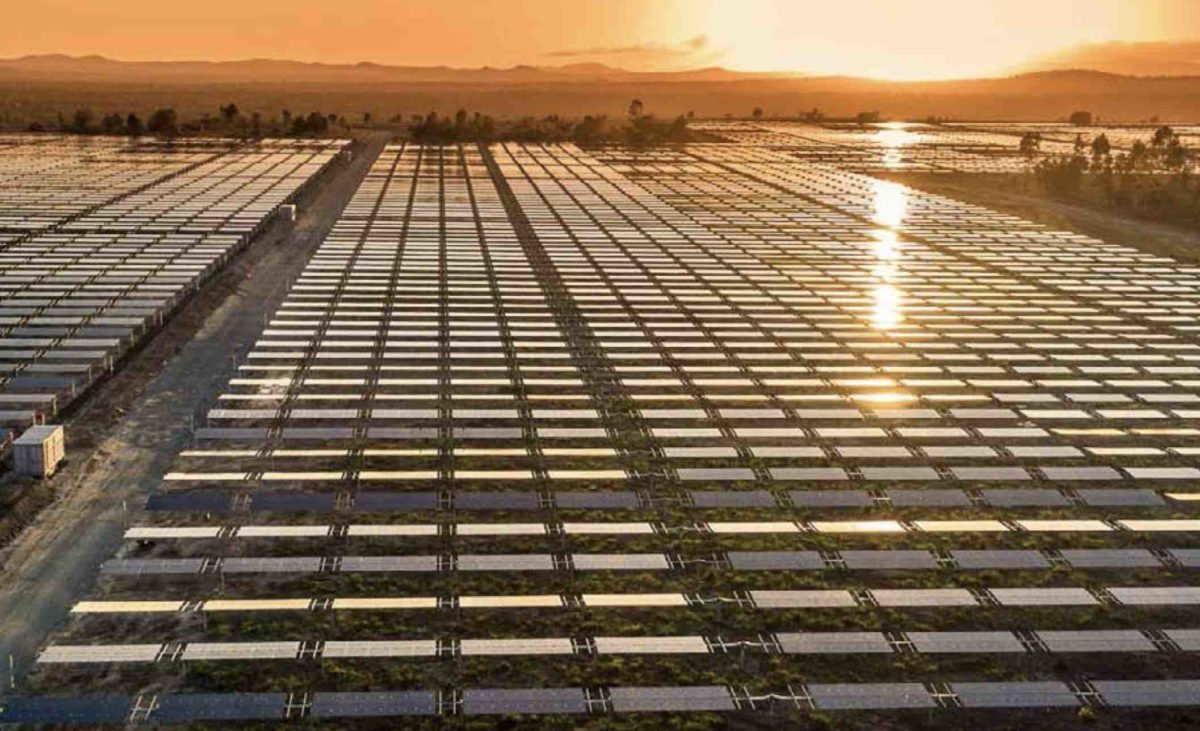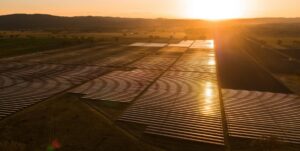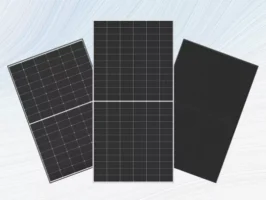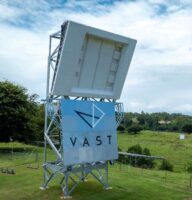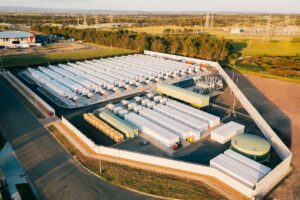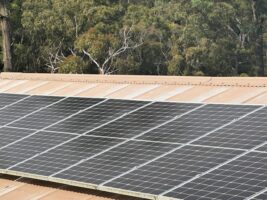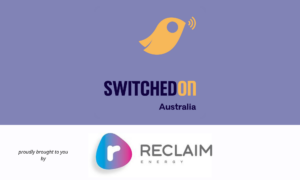The Cambridge solar and battery project in Queensland has won a green tick from environment minister Tanya Plibersek, just five months after entering the queue and after highlighting some of the more advancing thinking about solar: Agrivoltaics and ‘conservoltaics‘.
The ground under the 300 megawatt (MW) project will be seeded with native grasses to suppress exotic weed regrowth, stabilise the surface, and support the surrounding native environment, the final project description reads.
“Grazing animals will be introduced either periodically or consistently enough to maintain native grass height so as to not compromise performance of the solar farm. Grazing is to be managed at a low intensity so the native grasses can persist,” it says.
Conservoltaics encourages developers to think about solar farms as on-land artificial reefs which can be a safe haven for native plants and small animals, in much the same way offshore wind projects do for ocean life.
Part of the proposal put to the EPBC also highlighted the project’s environment-improving credentials, saying it will reduce irrigation water demand by switching from sugarcane farming to passive land use, and the reduction in fertiliser loads will reduce nutrient runoff into waterways.
The downstream catchment areas of waterways in the area include the Bowling Green Bay Ramsar area and broader Great Barrier Reef catchment.
“The reduction in use of insecticides and the re-establishment of native grass species will serve as beneficial to some known MNES (matters of national environmental significance) in the area, increasing forage supply in the form of insects and native grain,” the proposal says.
“Fundamentally, the Proposed Action represents an environmentally positive project.”
While these kinds of impacts aren’t fully on the radar of bureaucrats yet, there is a push for the wider environmental benefits offered by renewable developers to become part of the approval process.
Stage 1 ok’d with BESS
The project is smaller than the 374 MW originally proposed but has been approved to include a battery energy storage system at some point.
The $650 million project by renewables newcomer Cambridge JMD Australia is right next to the operating 100 MW Upper Haughton solar farm, with a view that co-locating the first stage of a much larger project would create a defacto energy hub.
The site is on former sugarcane farmland near Upper Haughton, about 80km south of Townsville, and is part of an ambitious $1.7 billion concept that would add another 956 MW of solar to the rest of the site and energy storage technology.
The site itself is located within a Renewable Energy Zone (REZ) identified by the Queensland government, spanning from Cairns in the north to Mackay in the south, and west to Hughenden.

Plibersek says she’s approved some 60 renewable energy projects in two years, with capacity to power 7 million homes.
“Labor is getting on with the job of transforming Australia into a renewable energy superpower while Peter Dutton’s so-called nuclear plan is threatening investment in renewables,” she said in a statement.
Cambridge JMD Australia plans to start work on the site in late 2025 with first phase commissioning to start in late 2026.
The developer will be Confluence Energy, a newly created in-house developer for the Australian company’s parent, Singapore-based real estate investor Cambridge RE Partners.
Confluence says on its website that it has built 4.2 gigawatts (GW) of solar, and has been contacted for comment.

